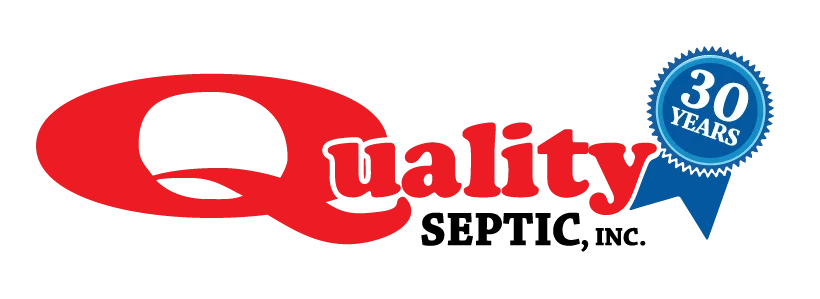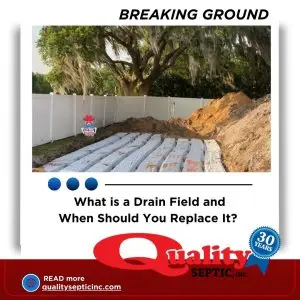A septic system is more than just a tank buried in the ground—it’s a carefully designed system that ensures wastewater is safely treated and dispersed. One of the most important yet often overlooked components of this system is the drain field. Without a properly functioning drain field, your entire septic system could fail, leading to expensive repairs and potential environmental hazards.
So, what exactly does a drain field do, and how do you know when it’s time for a replacement? Let’s break it down.
What Is a Drain Field & Why Is It Important?
Also known as a leach field or absorption field, the drain field is a network of perforated pipes buried in trenches filled with gravel or sand. Its primary function is to filter and disperse wastewater that exits your septic tank, allowing it to be naturally absorbed and treated by the soil.
How It Works:
- Wastewater flows from your home into the septic tank, where solids settle, and bacteria breaks down waste.
- Liquid waste moves from the septic tank into the drain field through a series of pipes.
- Soil filtration occurs as the water percolates through the ground, removing harmful bacteria and contaminants before it re-enters the environment.
A properly functioning drain field ensures that wastewater is safely processed, protecting both your property and nearby water sources from contamination.
Signs Your Drain Field May Be Failing
A failing drain field can lead to significant septic system problems, including backups, odors, and even system failure. Here are some red flags that indicate your drain field might be in trouble:
- Slow Drains & Backups
If sinks, toilets, or showers are draining slowly despite no apparent clogs, it could mean your drain field is oversaturated and struggling to absorb wastewater.
- Lush, Green Grass Over the Drain Field
While a little green grass is normal, an unusually lush or soggy patch of grass over your drain field can indicate excess moisture due to poor drainage.
- Standing Water in Your Yard
Puddles or soggy spots near the drain field suggest that wastewater is not being absorbed properly, often due to clogged soil or damaged pipes.
- Unpleasant Odors
A strong sewage smell around your yard or near your drains is a sign that wastewater isn’t filtering properly and may be starting to surface.
- Gurgling Noises in Your Plumbing
If you hear bubbling or gurgling sounds when flushing the toilet or using the sink, it could indicate a drainage issue related to your septic system.
When to Replace Your Drain Field
Sometimes, a drain field can be restored through maintenance or minor repairs. However, in other cases, a full replacement is the only option. Here’s when you should consider replacing your drain field:
✔️ The System Is More Than 20-30 Years Old – Drain fields don’t last forever. If yours is aging and showing signs of failure, replacement may be necessary.
✔️ Recurring Drain Field Failures – If you’ve had multiple backups, repairs, or ongoing problems, it may be time to install a new drain field instead of patching the old one.
✔️ Septic System Overload – If your household size has increased significantly, your existing drain field may no longer be able to handle the wastewater load.
✔️ Soil Compaction or Saturation – Heavy vehicles, construction, or landscaping changes over the drain field can damage the soil’s ability to absorb water.
✔️ Untreatable Clogs or Buildup – Over time, sludge and bacteria can clog the soil and pipes, making it impossible for the system to function properly.
How to Extend the Life of Your Drain Field
🔹 Pump Your Septic Tank Regularly – Regular pumping (every 3-5 years) prevents solids from entering and clogging the drain field.
🔹 Avoid Flushing Harmful Materials – No grease, wipes, chemicals, or non-biodegradable items should enter your septic system.
🔹 Be Mindful of Water Usage – Too much water at once can overload the system. Spread out laundry and avoid excessive use of water in a short period.
🔹 Keep Heavy Objects Off the Drain Field – Never drive, park, or build structures over your drain field to prevent soil compaction.
Need a Drain Field Inspection or Replacement? We Can Help!
If you’re noticing any signs of drain field failure or simply want to ensure your system is running at its best, Quality Septic, Inc. is here to help. Our experts specialize in septic system inspections, repairs, and drain field replacements throughout Florida.
📞 For more information, visit qualitysepticincorporated.com or call us at (813) 945-7552.
Don’t wait until a minor issue becomes a major problem—schedule your drain field inspection today!

